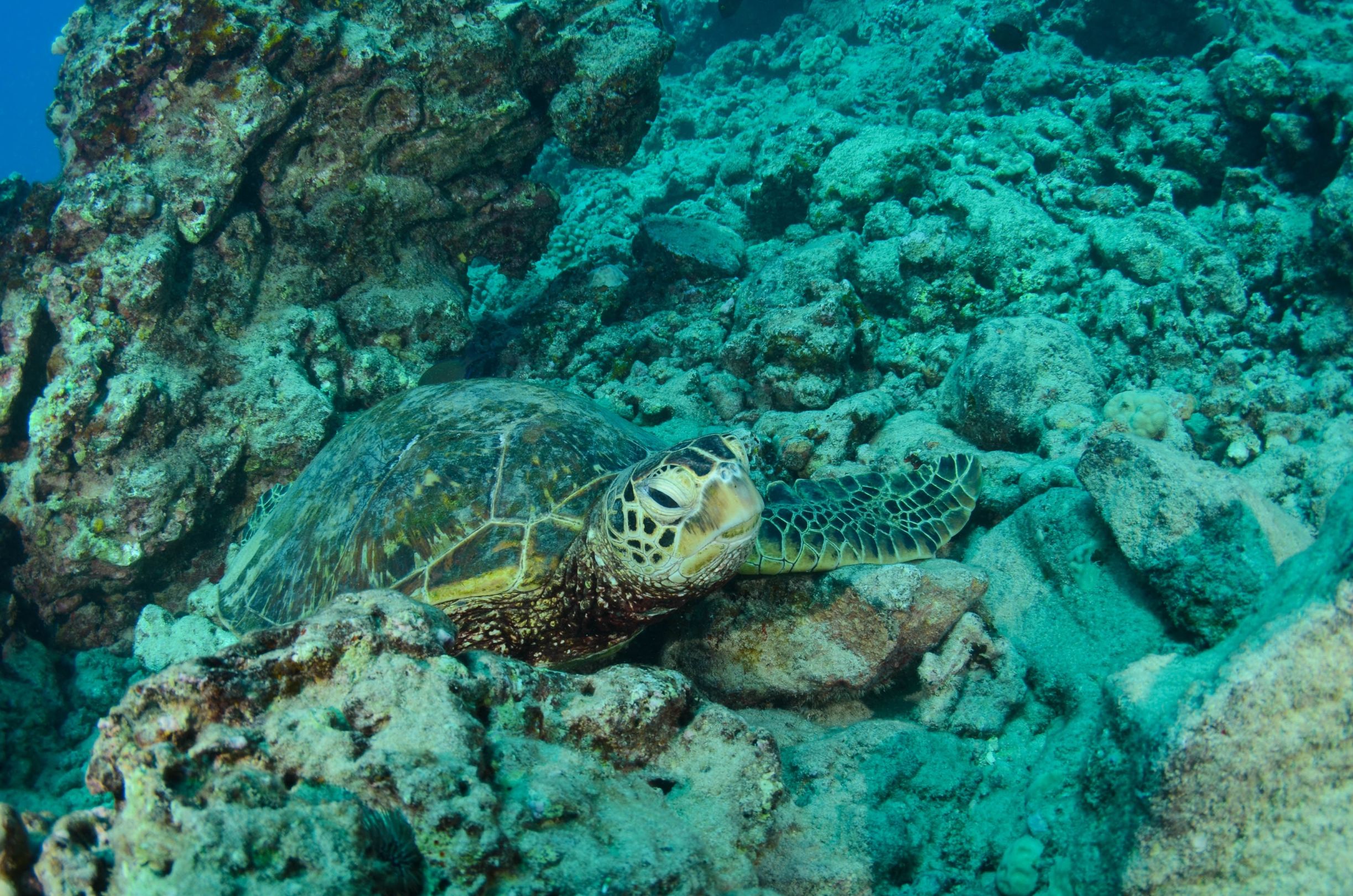
The island of Flores is one of the lesser visited spots in Indonesia. If you have heard of Flores island before, it’s probably because of Komodo dragons, or indeed the Komodo National Park. That’s because the western coast of Flores is actually a part of Komodo National Park, along with the islands of Padar, Rinca, Komodo itself and some other small islands nearby. But there’s also a lot more to Flores than just that – and a whole lot more wildlife and sea life, too.
What we're really telling you here is, if you want to see turtles in Indonesia, then there are certainly worse places to pick than the island of Flores.
Flores is at the heart of the Savu Sea Marine Protected Area: a vibrant area of Indonesia packed with coral and wildlife. 18 species of whales, including blue and sperm whales, swim in the protected space of the Savu Sea, alongside dolphins, manta rays and an abundance more. The area also serves as a major hatchery spot for endangered sea turtles and there’s even a turtle conservation centre there, run by the local community.
“I couldn’t believe that this place existed. Completely off the grid. No light pollution. No sound pollution. No development.”
We spoke to marine activist and travel industry expert Paul Landgraver, who we’ve been working with on our kayaking and hiking trip in Indonesia, and who’s been helping us keep the focus on traditional cultures and local community projects.
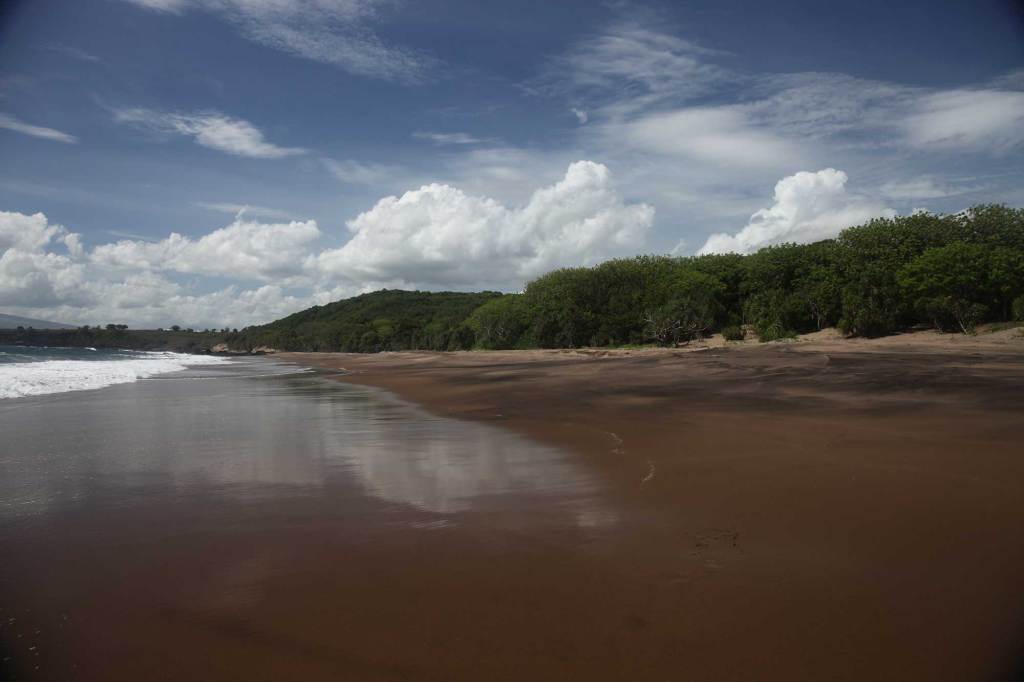
Paul was also involved in the original sourcing of the location for the turtle sanctuary – at Pante Hera beach in Southern Flores.
People may have heard of the turtle sanctuaries of Bali or of 'turtle conservation holidays', but the most crucial thing here, from the very start, was ensuring that that the sanctuary helped the species - and that by doing so, it was also able to provide positive impacts for the local community in a responsible manner.
The centre is dedicated to protecting critically endangered sea turtles. It’s remote. Properly off the beaten track. The first road only reached the Pante Hera area in the 1980s. But now it’s home to a sanctuary which, crucially, has been put together by the local community team, and which now provides that local community with a sustainable income. Paul talks us through the story of the conservation camp.
“I started exploring the island when we had our dive shop [in Komodo],” he explains. “I fell in love with the scenery of the island, the people, everything. I explored more and more and eventually discovered the beach where we now have the turtle centre. It’s about a 1.7km long beach.
“I couldn’t believe that this place existed. Completely off the grid. No light pollution. No sound pollution. No development. People just inviting you into their houses. Then I found out that there are turtles nesting on the beach, and that people eat and sell the eggs. I got really active into it.
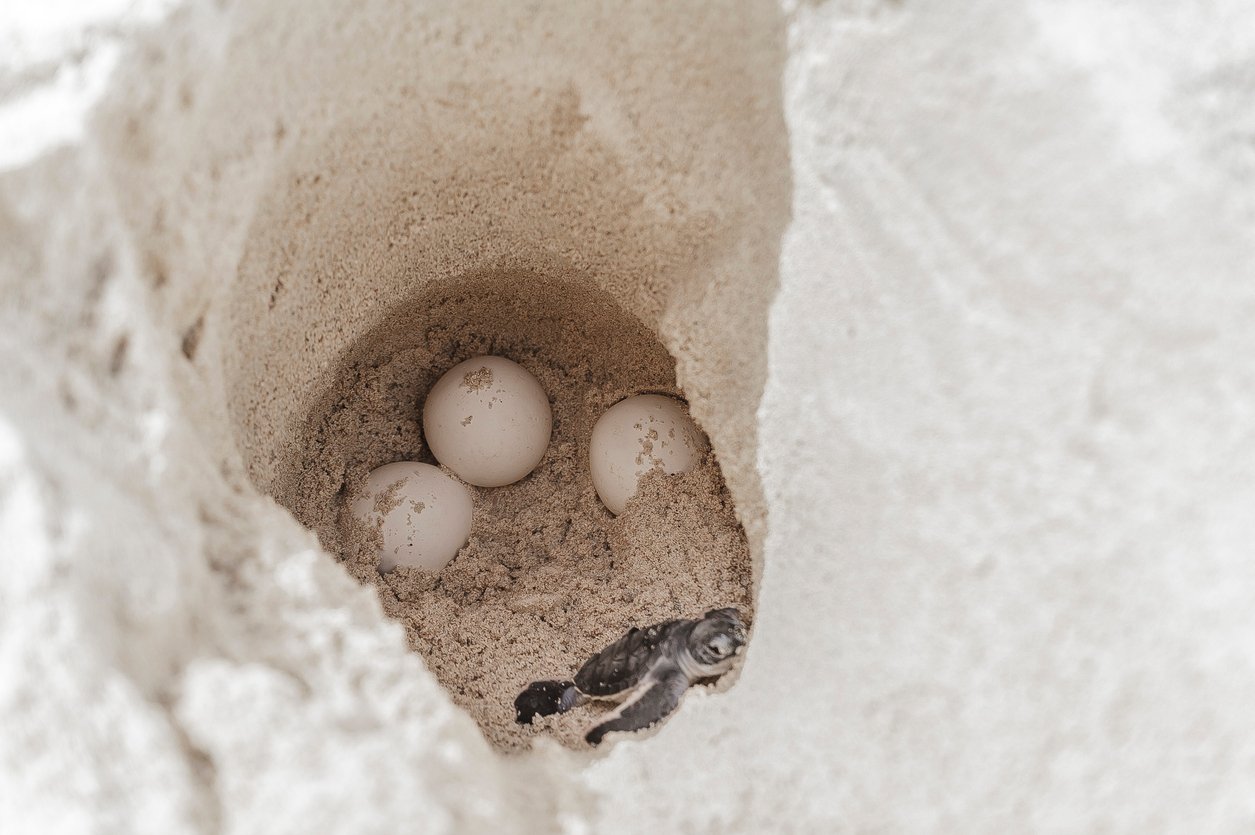
“Half of the harvesting [of turtle eggs] tends to be for food and half of it is harvesting for sale. Then they’ll export it to Java. There’s still a lot of cultures that eat the eggs.”
For many locals, in such a remote spot in Indonesia far from tourism, selling turtle eggs was one of the only way to make money.
Paul laments the way that many western outsiders or mercenaries come into cultures such as that of Flores and attempt to “help” or change the communities. He’s keen to emphasise that this is not a “white saviour scenario”, that his own involvement has actually been limited at the centre, and that most of the work has been done by a local team, and the local community, who in turn then gain economically from the set up.
“Everything we do is about community empowerment”
“A lot of outsiders come into these communities, tell them that they’re doing something wrong, then put a poster up and leave,” he says. “Some come in for about a year, build something, and don’t even tell anyone how to fix it.”
“What we did is that we came in with the specific intention of working with the community and trying to find a sustainable income. Everything we do is about community empowerment and the whole project has been brought to fruition by our local team. For this to be a sustainable project, it needs viable income, not donations. And the sheer man-hours put into is incredible… a very small percentage of them done by myself or my partner!”
“Around half of the community [go out and find the eggs, which are then protected in the sanctuary]. The younger generation love doing it. They start to go out and see if they can spot the nests. All the accommodation and everything for the centre is built by locals, with local product and everything like that, too.
“Hopefully as more people come through and visit the conservation centre, the community will see more and more tourism and this can be their income stream.”
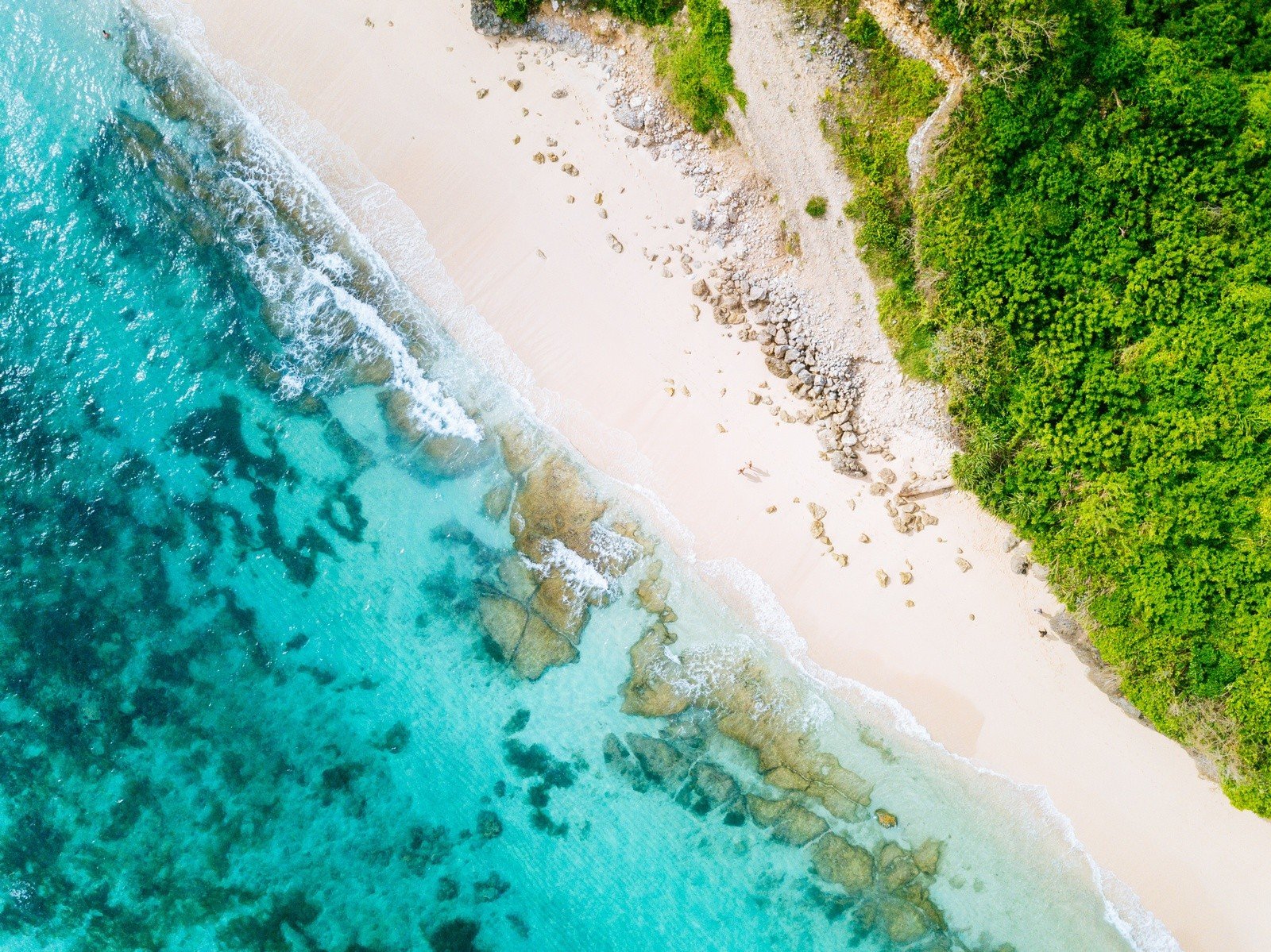
It’s another great example of positive ecotourism on the island of Flores, where the indigenous village of Wae Rebo are already providing a strong model of how self-driven ecotourism can help a remote community thrive.
“The sick turtles that come into the areas or that the fishermen catch, we’re going to be trying to rehab them, and then sending them back out”
The turtle conservation centre is in the heart of the Savu Sea Marine Protected Area, so the centre supplements the laws which already exist around protection in the area. The arrival of guests to the centre will only boost the progress of the conservation centre’s work. So, we ask, what does the future hold for the centre?
“Well, as the asphalt road is finished, we’ll be starting to develop the hatchery,” Paul says.
“And this will allow us to keep the [sea turtle’s] nests down at our beach. There are two different 3km long beaches that are just pure poaching nearby, and no other turtle conservations near. There’s one other project on the island of Flores, which is 600km long, but nothing on our coast. So the idea is that we’re going to try and build more infrastructure for the hatchery.
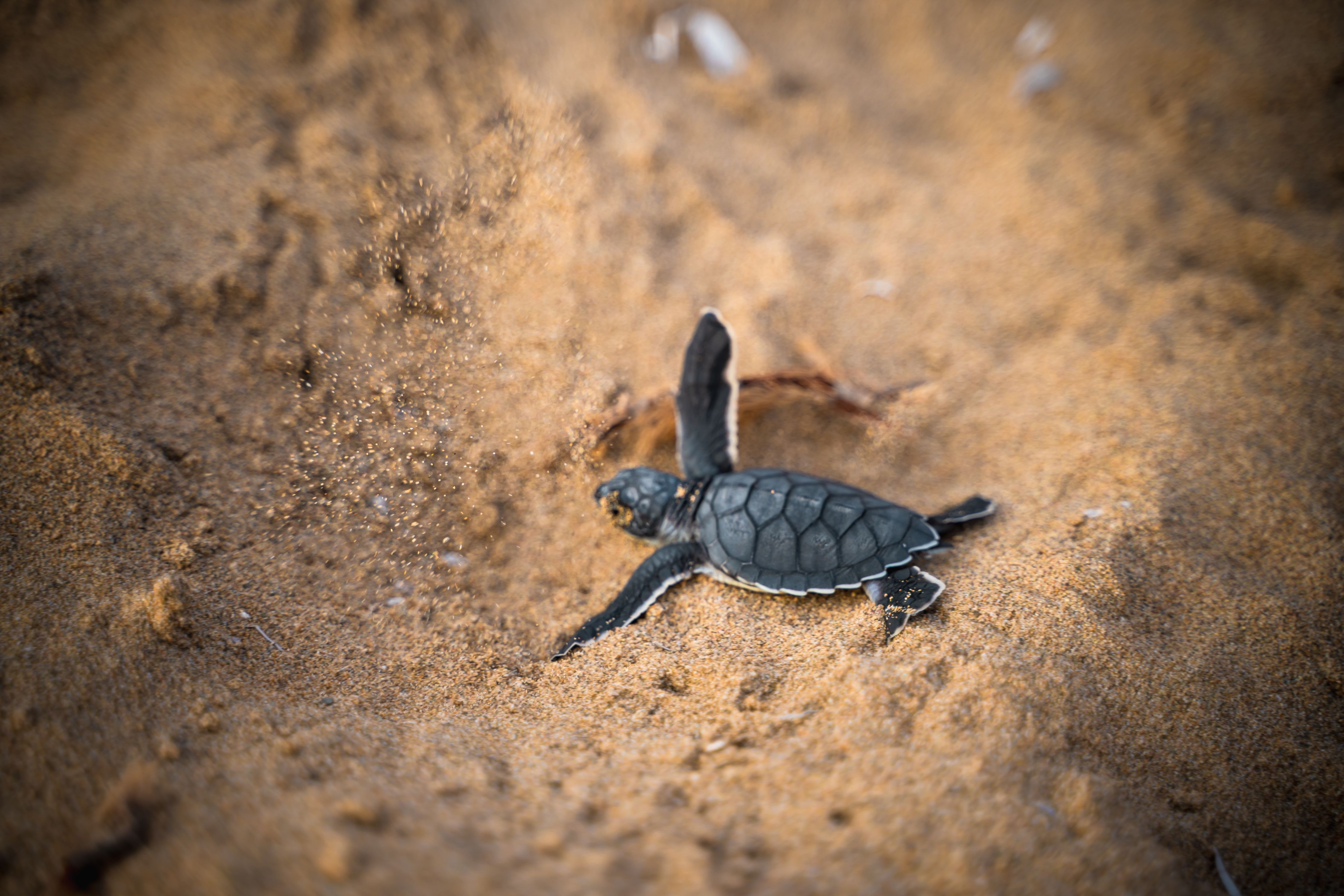
“The sick turtles that come into the areas or that the fishermen catch, we’re going to be trying to rehab them, and then send them back out, and as we go along basically everyone [who visits] is going to be participating in a project. Depending on the timing, that could be helping construct a reservoir pool for sea water or painting and making signs for the centre. Of course, a lot of it depends on the fitness and skills and interests of the guests.”
The conservation project is funded entirely through donations, so increased footfall is crucial to provide that more regular, reliable income, which Paul previously mentioned as being crucial for the project.
As people continue to visit the turtle conservation, the idea is that it’ll raise further awareness about the endangered species and bring in more income for the local village, which otherwise rarely gets a look-in from tourism, given that in Flores, tourism is largely dominated by surrounding areas – the Komodo National Park and the nearby island of Bali.
The turtle conservation centre, on a remote southern coast of Flores, is just the latest project in which a local community are showing how well conservation can go hand in hand with positive ecotourism.
For further reading, check out our feature on the indigenous Wae Rebo village on Flores. Feeling inspired and want to help this conservation project in person? Have a look at our adventure holidays to Indonesia now.

